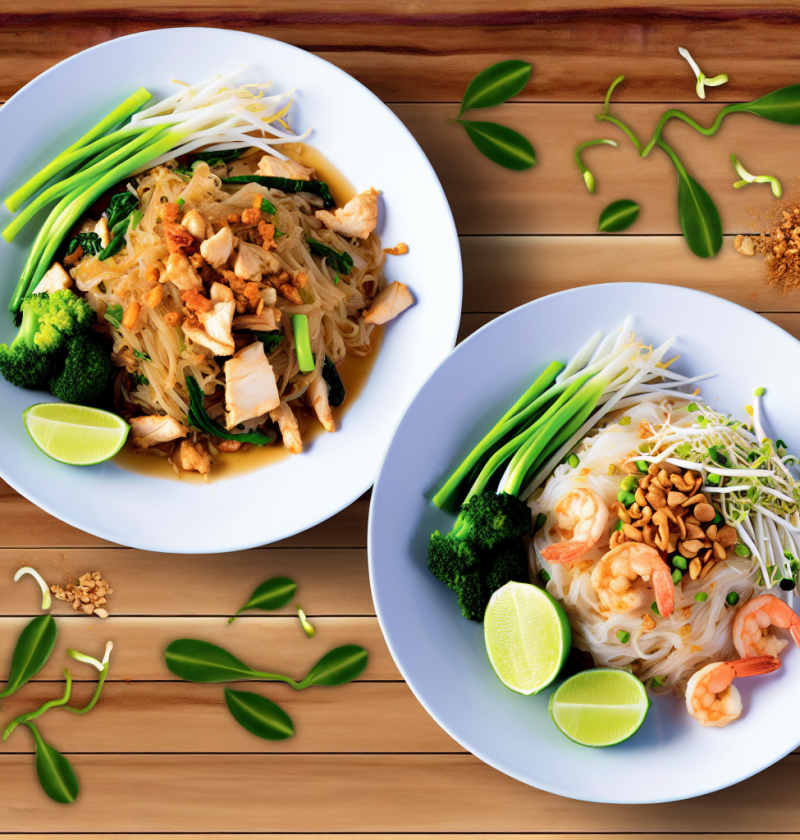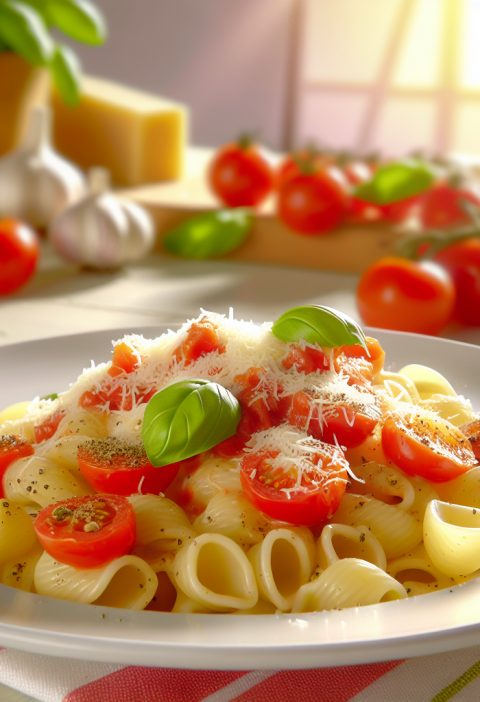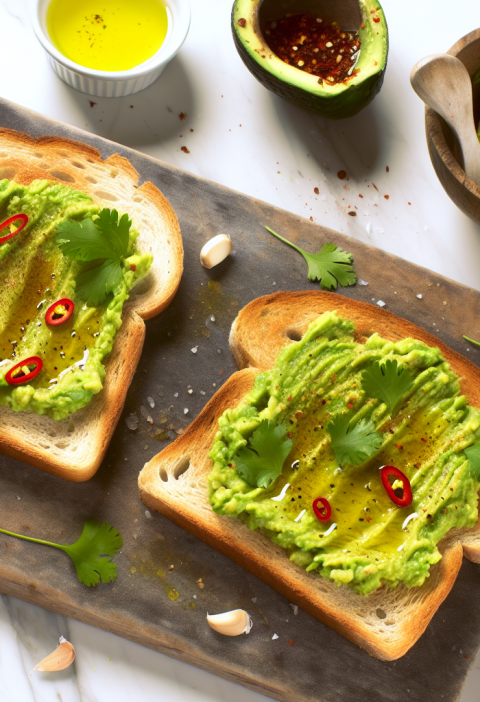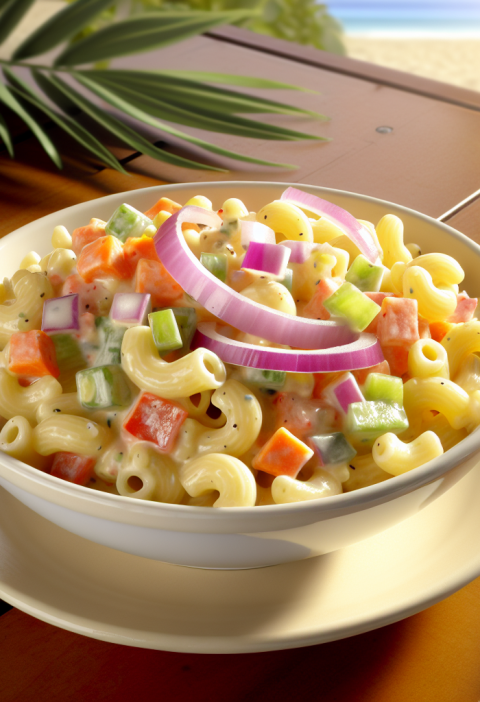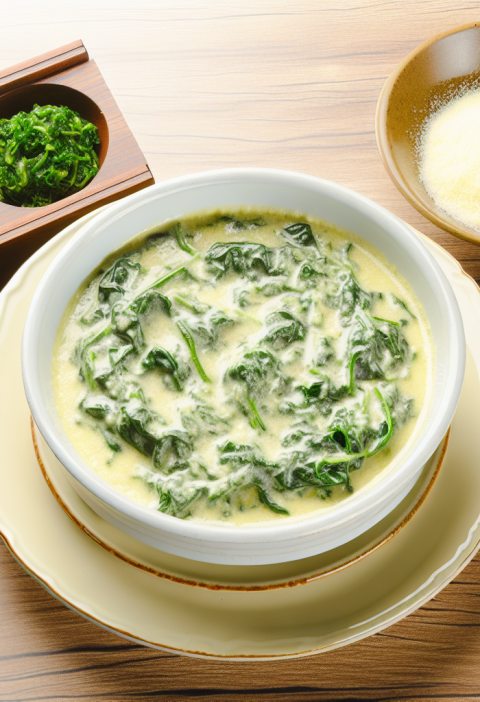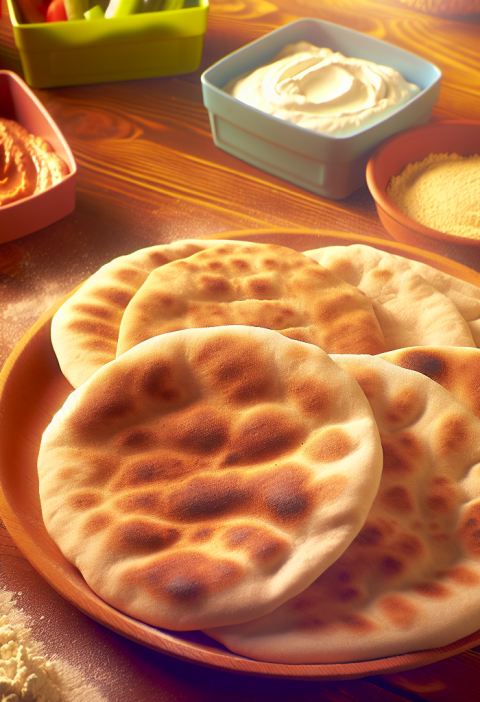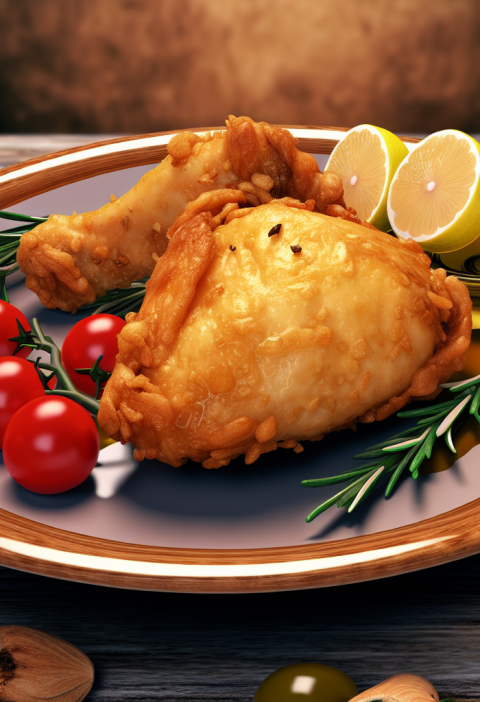“`html
The Ultimate Thai Street Food Showdown: Pad See Ew vs. Pad Thai Recipes!
Imagine the tantalizing aroma of stir-fried noodles wafting through your kitchen, filling the air with a symphony of savory, sweet, and umami. The sizzle of the wok, the rich hues of soy sauce caramelizing on the surface, and the crisp, fresh bites of vegetables blending beautifully with tender proteins. Welcome to the culinary wonders of Pad See Ew and Pad Thai, two sensational dishes that capture the essence of Thai street food like no other. Today, I’ll guide you through the meticulous yet rewarding process of creating these quintessential Thai dishes in the most humane, flavorful way possible. Trust me, once you master these recipes, your home meals will be forever transformed into a culinary adventure!
Preparation Time
- Prep Time: 15 minutes
- Cook Time: 15 minutes
- Total Time: 30 minutes
The following recipes are suitable for 4 servings and are of medium difficulty.
Ingredients
The Necessary Ingredients (possible in all kinds of variations)
Pad See Ew
- 1 lb wide rice noodles (fresh or dried)
- 3 tbsp dark soy sauce
- 2 tbsp light soy sauce
- 2 tbsp oyster sauce
- 1 tsp sugar
- 1 lb chicken breast, thinly sliced (or tofu for vegan option)
- 3 cloves garlic, minced
- 2 cups Chinese broccoli, chopped
- 2 large eggs
- 2 tbsp vegetable oil
Pad Thai
- 8 oz rice noodles
- 2 tbsp tamarind paste
- 3 tbsp fish sauce (or soy sauce for vegan option)
- 1 tbsp sugar
- 1/2 lb shrimp or chicken (or tofu for vegan version)
- 3 cloves garlic, minced
- 1 cup bean sprouts
- 1/2 cup roasted peanuts, crushed
- 2 large eggs
- 2 tbsp vegetable oil
- 1 lime, cut into wedges
- Fresh cilantro for garnish
For those with dietary restrictions, you can swap out chicken or shrimp in both recipes for tofu, ensuring a perfect plant-based meal. For gluten-free options, make sure to use gluten-free soy sauce and tamari instead of standard soy and oyster sauces.
Steps
The Steps of Preparation (possible in all kinds of variations)
Pad See Ew
- Soak the dried rice noodles in warm water for 30 minutes or until softened. If using fresh noodles, gently separate them.
- In a small bowl, mix the dark soy sauce, light soy sauce, oyster sauce, and sugar. Set aside.
- Heat a wok over high heat and add 1 tbsp of vegetable oil. Add the minced garlic and stir-fry until fragrant.
- Add the chicken (or tofu) and cook until no longer pink. Push to one side of the wok.
- Add another tablespoon of vegetable oil and add the noodles. Stir-fry for about 2 minutes.
- Pour in the prepared sauce mixture and combine well with the noodles.
- Push everything to one side and crack the eggs into the wok. Scramble until just set, then mix with the noodles and meat.
- Add the Chinese broccoli and stir-fry for another 2-3 minutes until the vegetables are tender-crisp.
- Serve hot, garnished with fresh cilantro if desired.
Pad Thai
- Soak the rice noodles in warm water for 30 minutes or until softened, then drain.
- In a small bowl, mix the tamarind paste, fish sauce, and sugar. Set aside.
- Heat a wok over high heat and add 1 tbsp of vegetable oil. Add the minced garlic and stir-fry until fragrant.
- Add the shrimp or chicken (or tofu) and cook until no longer pink. Push to one side of the wok.
- Add another tablespoon of vegetable oil and add the noodles. Stir-fry for about 2 minutes.
- Pour in the prepared tamarind sauce mixture and combine well with the noodles.
- Push everything to one side and crack the eggs into the wok. Scramble until just set, then mix with the noodles and meat.
- Add the bean sprouts and stir-fry for another 2-3 minutes until the vegetables are tender-crisp.
- Serve hot, garnished with crushed peanuts, lime wedges, and fresh cilantro.
To prepare the ultimate Thai street food experience, you have now successfully cooked Pad See Ew and Pad Thai. The bold, savory flavors of Pad See Ew contrast beautifully with the tangy, nutty notes of Pad Thai, offering a complete taste adventure.
Nutritional Benefits
- High protein content from the chicken, shrimp, and tofu, supporting muscle repair and growth.
- Rich in antioxidants and vitamins from fresh vegetables such as Chinese broccoli and bean sprouts.
- Healthy fats from vegetable oil and roasted peanuts, essential for brain and heart health.
- Gluten-free options available, suitable for those with gluten intolerance or celiac disease.
Think about the scope of nutritional diversity these recipes hold! These dishes are incredibly versatile, providing a well-balanced intake of protein, vitamins, and essential nutrients.
Possible Additions or Upgrades to the Recipe
- Add a splash of Sriracha or chili garlic sauce for an extra kick of heat.
- Incorporate additional vegetables such as bell peppers, carrots, or mushrooms for more color and nutrients.
- Top with a fried egg to add richness and an extra dose of protein.
- Use low-carb noodles or zoodles for a healthier twist.
- Try different proteins like beef or pork for a flavor variation.
Each addition or upgrade adds another layer of complexity and enjoyment to your meal. Feel free to experiment and find the combination that suits your taste buds the best!
Q&A
Can I make these dishes ahead of time?
Yes, both dishes can be prepared ahead of time and stored in the fridge for up to 2 days. Just reheat in a wok or microwave before serving.
Is it necessary to use a wok?
While a wok is traditional and provides the best results, you can also use a large frying pan.
Can I make these dishes completely plant-based?
Absolutely! Substitute the meats with tofu, and use soy sauce in place of fish sauce and oyster sauce.
Which noodles work best?
Wide rice noodles are ideal for Pad See Ew, while medium-sized rice noodles are perfect for Pad Thai.
How do I store leftovers?
Leftovers should be stored in an airtight container in the fridge and consumed within 2 days.
Can I freeze these dishes?
Freezing is not recommended as the noodles can become mushy when thawed.
How do I make it less spicy?
Both dishes are traditionally mild, but you can adjust the level of spice by reducing or omitting the optional chili sauces.
Is there a low-sodium version?
Use low-sodium soy sauce and reduce the amount of added salt in the recipe to create a healthier version.
Can I add other vegetables?
Absolutely, feel free to add any vegetables you enjoy, just adjust the cooking time accordingly.
How can I make it more authentic?
Use high-quality, traditional Thai ingredients and cook in a well-seasoned wok over high heat for the best results.
From my experience, these Thai dishes truly transform a simple meal into an unforgettable experience, filled with vibrant flavors and textures. The joy of sharing them with family and friends is incomparable. I encourage you to share these recipes on social media and spread the culinary love. Let’s make our kitchen a hub of delicious memories!
“`

